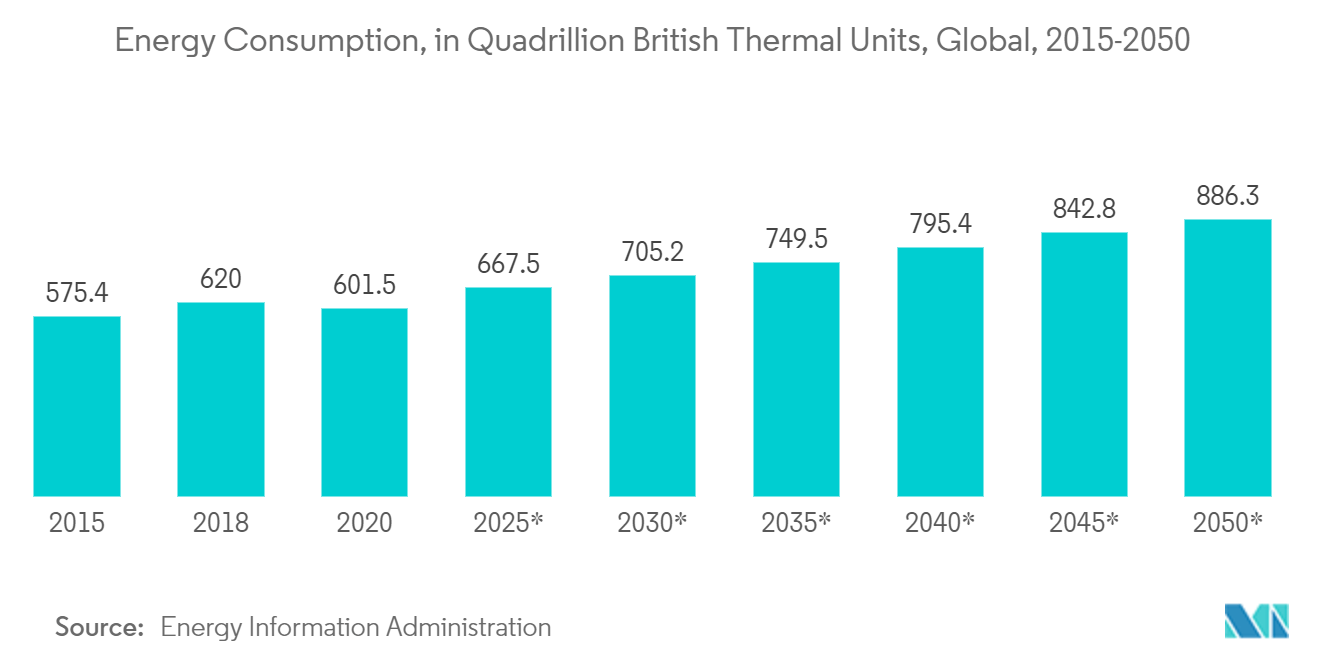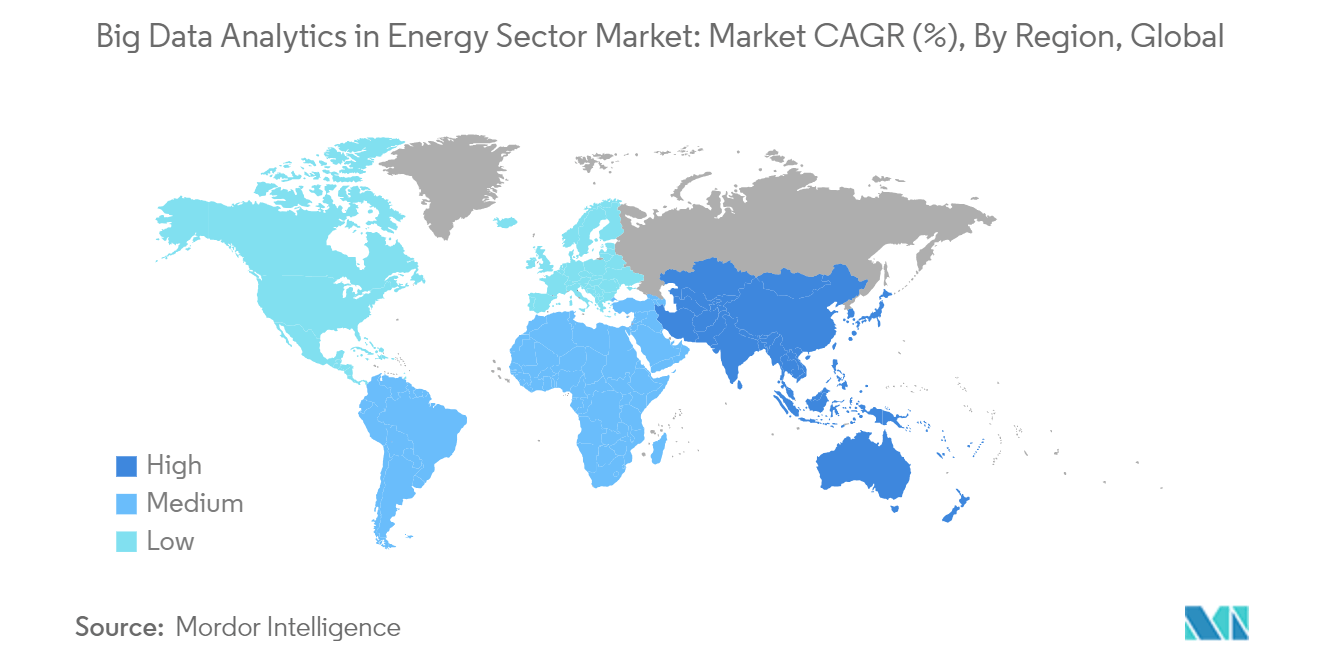Market Trends of Big Data Analytics Industry In Energy Sector
Grid Operations Application Segment is Expected to Hold Significant Market Share
- The demand for energy across the world is rising. According to the International Energy Agency, between 2005 and 2030, energy needs are estimated to expand by 55%, with the demand rising from 11.4 billion metric tons of oil equivalent to 17.7 billion, and the forecasted global energy consumption will be 886.3 quadrillion British thermal units by 2050. With renewable energy sources, such as solar power, which contributes electricity to the power grid, utilities can use demand response analytics to determine the timings to release these power sources during peak demand.
- Data analytics possess a critical role in modern industrial systems. In the power grid, traditional fossil fuels face the problem of depletion, and de-carbonization demands the power system to reduce carbon emissions. Smart grid and super grid are effective solutions to accelerate the pace of electrification with high penetration of renewable energy sources.
- Traditional electricity meters used in distribution systems only produce a small amount of data that can be manually collected and analyzed for billing purposes. The huge volume of data collected from two-way communication smart grids at various time resolutions requires advanced data analytics to extract important information for billing information and the status of the electricity network. For instance, the high-resolution user consumption data can also be used for demand forecasting, customer behavior analysis, and energy generation optimization.
- Smart grid big data analytics can potentially transform the utility industry. However, it needs to be appropriately used to maximize its value. Smart grid analytics divided itself into back-office analytics (certain functions, like overseeing grid connectivity, load forecasting, and reliability reporting) and distributed analytics (analyzing data from meters, sensors, and other devices).
- Predictive maintenance and fault detection based on data analytics with advanced metering infrastructure are more crucial to the security of the power system. They are expected to be the solutions that are expected to be now utilized by the early adopters as the solutions have been integrated into their organization. GE’s New Analytics Technologies is boosting grid efficiency. The company has also rolled out a new portfolio of predictive analytics that could allow utilities to use data from transmission and distribution networks to achieve better operational efficiency as more distributed assets are introduced to the grid.

North America is Expected to Hold Significant Market Share
- North America is one of the leading innovators and pioneers in the adoption of big data analytics. The region offers lucrative opportunities for market growth, exhibiting a massive demand for big data analytics in the energy sector owing to the strong foothold of big data analytics vendors.
- The United States plays a key role in proliferating the demand from the North American region compared to Canada. The country has increased demand, especially from oil and gas, refining, and power generation segments. The majority of Americans consider solar and wind power as good sources of energy for the environment. Around 65% of the population suggests that the environmental effect of wind turbine farms is better than that of most other sources.
- The oil and gas companies benefit from applying predictive maintenance solutions. IoT-based predictive maintenance enables oil and gas companies to identify possible failures and increase the production of highly critical assets. Thus, companies such as Chevron employed IoT development to roll out a predictive maintenance solution that helps mitigate corrosion and pipeline damage. The solution uses sensors installed across the pipeline to measure the pH, aqueous CO2/H2S content, and gaseous leakages along with the pipeline’s internal diameter and thickness. The solution collects real-time sensor data and passes it to the cloud for evaluation, analysis, and prediction.
- The region has been at the forefront of adopting smart grid technology. A large number of companies operating in the energy utility sector in the region have either fully deployed big data analytics or are in the process of implementation. Many large investor-owned utilities in the US market are still in the process of rolling out smart meters for their customers. According to the US Energy Information Administration, 119 million smart meters were to be installed in the US by the end of 2022, whereas 128 million smart meter deployments were completed by the end of 2023.
- Big data is extensively being used for the accurate prediction of meteorological variables in the region. Disparate data sources and models are observed using computational intelligence techniques for real-time analysis. Recently, Bazefield, the market-leading renewable monitoring and analytics platform with off-the-shelf support for wind power, solar, hydro, biomass, battery storage, and other renewable technology sources, enhanced its solar capabilities by embedding the gold standard EnSight, machine learning-based solar advanced analytics package, into Bazefield as one single platform.

